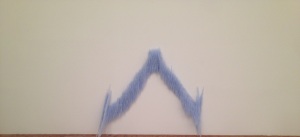Ancestry
by alteleki
Human genes are not eligible for patenting in the U.S. [1,2]. Nevertheless, synthetically created or copied parts of the human genome can be claimed as intellectual property. Thus engineered DNA can be considered an intellectual construct. This poses an issue: there are methods for reconstructing ancestral genetic sequences from actual DNA samples [3], and synthesis of actual DNA chains given as sequence is routine and can be outsourced to many biotech companies (for as low as a few cents per base pair). This inferred DNA sequences, being designed by special methods and synthetically produced, has no legal limitations for being patented. However, if the calculations are correct (and how do we know that?), that part of DNA is an exact copy of that of a human that existed a few centuries ago. Exactly how long, depends on the number and details of each sample. Therefore, this poses a challenge to the idea of gene patenting, because (i) the DNA in question is naturally human, but at the same time (ii) it is synthetically designed.
Ancestry addresses the fact that any group of people have a common ancestor, and that this common ancestor can be known, and in principle, recreated. Beyond being only an installation, Ancestry is also a performance that involves the audience. In situ, the artist asks for volunteers to donate samples of DNA in order to be sequenced and employed for ancestral reconstruction. Afterwards, the ancestral DNA is to be synthesised and patented.
During the vernissage of “Human necessities” on the 17 of Jun 2013 at the Moravian Gallery [4], ten volunteers donated saliva samples. The samples were immediately transferred to 1.5 ml Eppendorf tubes, and subsequently stored at -4 C. The next they were transferred to a mid term storage at -20 C for further processing.
The volunteers were informed both, verbally and written, about the terms and conditions of the donation. They all signed an informed consent. The names and the samples will be kept confidential. There is no direct association between the samples and the donors (double confidentiality policy).
Further information about the processing will be posted in this blog in due time.
References, Links & Further Reading
- “US Supreme Court says human DNA cannot be patented” BBC News, 13 June 2013. BBC News, 19 June, 2013. <BBC News>
- Pathology et al v. Myriad Genetics et al. 12-398 Supreme Court of the United States. 2013. Web 19 July, 2013. <PDF>
- Yang, Z. (2006) “Computational Molecular Evolution”. OUP Oxford.
- “
HumanNecessities: 15 steps for a wonderful patent”. Moravská Galerie. Brno, Czec Republic. <Link | Link | Link> - Department of ontological Patchworks. University of Applied Arts, Vienna. <Link>
